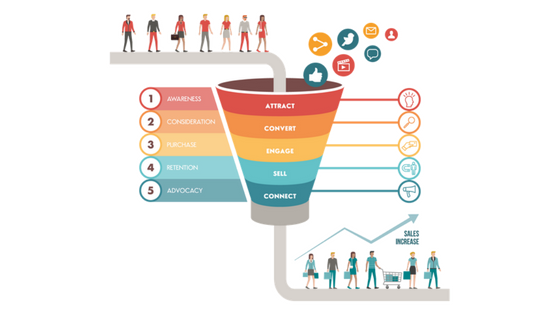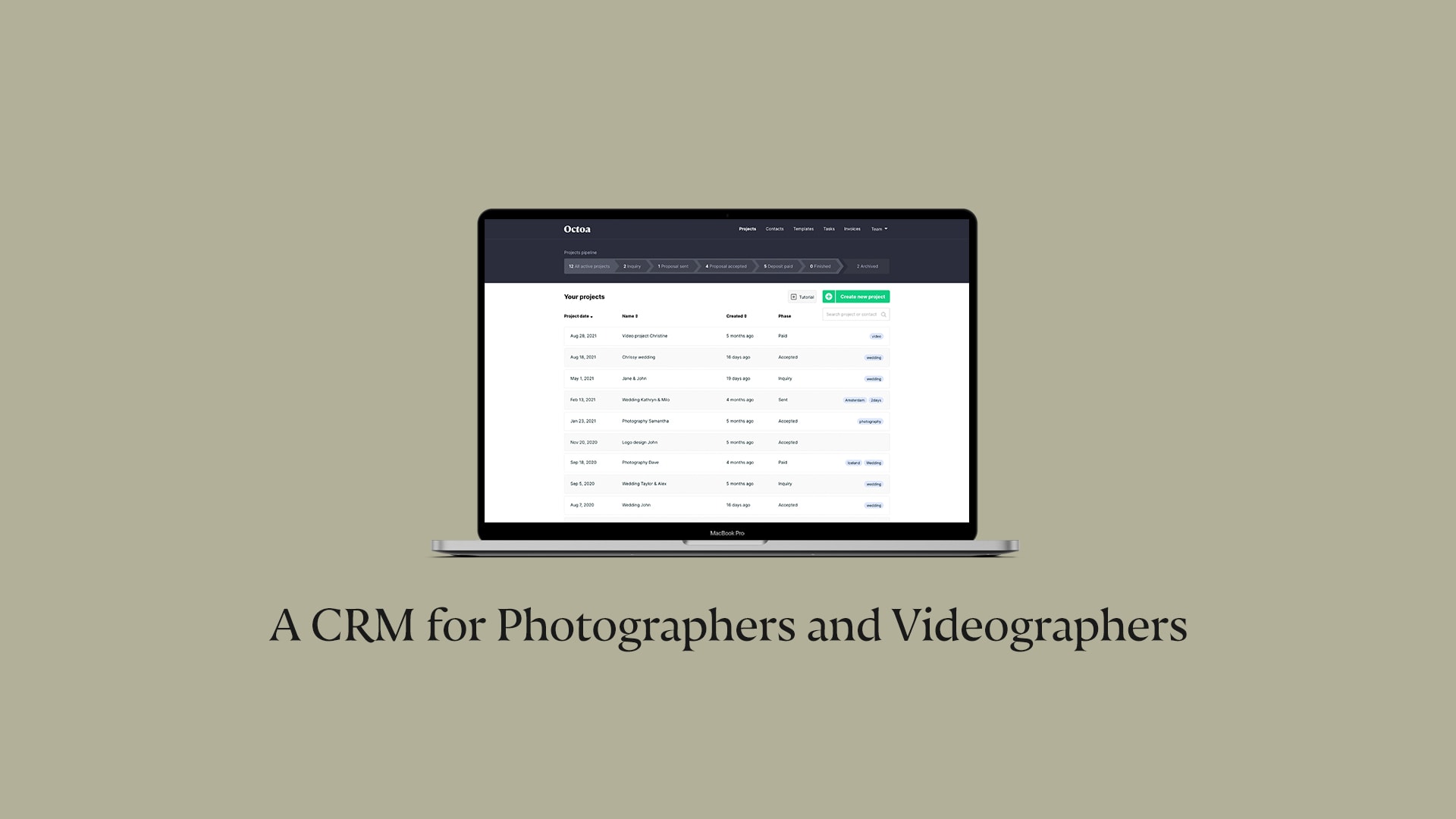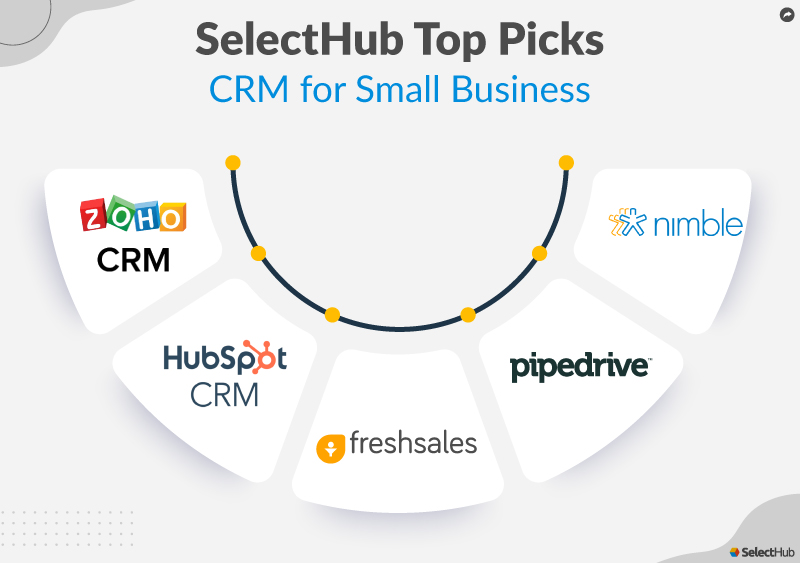Small Business CRM Tutorial: Your Complete Guide to Customer Relationship Management
Small Business CRM Tutorial: Your Complete Guide to Customer Relationship Management
Running a small business is a thrilling rollercoaster. You’re juggling everything from product development and marketing to customer service and finances. Amidst all the chaos, keeping track of your customers – the lifeblood of your business – can feel like herding cats. That’s where a Customer Relationship Management (CRM) system steps in. Think of it as your central command center for all things customer-related. This comprehensive small business CRM tutorial will walk you through everything you need to know, from the basics to advanced strategies, to help you choose, implement, and master CRM for your small business.
What is a CRM? (And Why Does Your Small Business Need One?)
CRM stands for Customer Relationship Management. At its core, a CRM is a system that helps you manage your interactions with current and potential customers. It’s more than just a contact list; it’s a powerful tool that allows you to:
- Centralize Customer Data: Store all customer information – contact details, purchase history, communication logs, and more – in one accessible place.
- Improve Customer Service: Provide personalized and efficient support by having instant access to customer information.
- Boost Sales: Identify and nurture leads, track sales progress, and close deals more effectively.
- Streamline Marketing: Segment your audience, personalize marketing campaigns, and measure their performance.
- Enhance Collaboration: Enable your team to work together more effectively by sharing customer information and insights.
- Gain Valuable Insights: Analyze customer data to understand their behavior, preferences, and needs, allowing you to make data-driven decisions.
For small businesses, a CRM is not just a luxury; it’s a necessity. It levels the playing field, allowing you to compete with larger companies by providing exceptional customer experiences. Without a CRM, you risk losing track of leads, missing opportunities, and ultimately, losing customers. Let’s face it, in today’s competitive market, happy customers are your best advocates.
Key Benefits of Using a CRM for Your Small Business
Investing in a CRM for your small business comes with a multitude of benefits. Here are some of the most significant advantages:
1. Enhanced Customer Relationships
At the heart of any successful business are strong customer relationships. A CRM empowers you to build and nurture these relationships by:
- Personalization: Tailor your interactions with customers based on their individual needs and preferences.
- Improved Communication: Keep track of all communications, ensuring that you never miss a follow-up or forget a detail.
- Proactive Engagement: Anticipate customer needs and proactively offer solutions.
- Increased Loyalty: By providing exceptional customer service, you foster loyalty and encourage repeat business.
2. Increased Sales and Revenue
A CRM can significantly boost your sales performance by:
- Lead Management: Track and nurture leads through the sales pipeline, ensuring that no opportunity falls through the cracks.
- Sales Automation: Automate repetitive tasks, such as sending follow-up emails, freeing up your sales team to focus on closing deals.
- Sales Forecasting: Gain insights into your sales pipeline and predict future revenue with greater accuracy.
- Opportunity Tracking: Monitor the progress of each sales opportunity and identify potential roadblocks.
3. Improved Marketing Effectiveness
A CRM provides valuable tools for optimizing your marketing efforts:
- Customer Segmentation: Divide your audience into segments based on demographics, behavior, and preferences.
- Targeted Campaigns: Create personalized marketing campaigns that resonate with specific customer segments.
- Marketing Automation: Automate marketing tasks, such as sending email newsletters and social media updates.
- Performance Tracking: Measure the effectiveness of your marketing campaigns and make data-driven adjustments.
4. Increased Efficiency and Productivity
By automating tasks and streamlining workflows, a CRM can significantly improve your team’s efficiency and productivity:
- Centralized Data: Eliminate the need to search through multiple spreadsheets and databases.
- Automated Workflows: Automate repetitive tasks, such as data entry and email follow-ups.
- Improved Collaboration: Enable your team to work together more effectively by sharing customer information and insights.
- Reduced Errors: Minimize the risk of human error by automating tasks and centralizing data.
5. Better Decision-Making
A CRM provides you with the data and insights you need to make informed decisions:
- Customer Insights: Understand your customers’ behavior, preferences, and needs.
- Sales Analytics: Track sales performance and identify areas for improvement.
- Marketing Analytics: Measure the effectiveness of your marketing campaigns and make data-driven adjustments.
- Business Intelligence: Gain a comprehensive view of your business performance and make strategic decisions.
Choosing the Right CRM for Your Small Business
Selecting the right CRM is crucial for its success. With so many options available, it can feel overwhelming. Here’s a breakdown of key factors to consider:
1. Identify Your Needs and Goals
Before you start looking at different CRM systems, take the time to define your specific needs and goals. What are you hoping to achieve with a CRM? Consider the following questions:
- What are your biggest pain points in managing customer relationships?
- What features are essential for your business? (e.g., sales automation, marketing automation, customer service)
- What is your budget?
- What is your team’s technical expertise?
- How many users will need access to the CRM?
Answering these questions will help you narrow down your options and choose a CRM that aligns with your unique requirements.
2. Consider Your Budget
CRM systems vary in price, from free to enterprise-level solutions. Determine your budget and stick to it. Free CRM options may offer basic features, while paid options provide more advanced functionality and support. Consider the following cost factors:
- Subscription Fees: Most CRM systems operate on a subscription model, with monthly or annual fees.
- Implementation Costs: Some CRM systems require professional implementation services.
- Training Costs: You may need to invest in training for your team to learn how to use the CRM effectively.
- Add-ons and Integrations: Additional features and integrations with other business tools may incur extra costs.
3. Evaluate Features and Functionality
Look for a CRM that offers the features you need to achieve your goals. Consider the following features:
- Contact Management: Store and manage customer contact information.
- Sales Automation: Automate sales tasks, such as lead nurturing and follow-up emails.
- Marketing Automation: Automate marketing tasks, such as email marketing and social media posting.
- Customer Service: Manage customer support tickets and provide efficient customer service.
- Reporting and Analytics: Track key metrics and gain insights into your business performance.
- Integration: Integrate with other business tools, such as email marketing platforms, accounting software, and e-commerce platforms.
- Mobile Accessibility: Access your CRM from your mobile devices.
4. Assess Ease of Use
The CRM should be user-friendly and intuitive. Consider the following factors:
- User Interface: Is the interface clean, easy to navigate, and visually appealing?
- Customization: Can you customize the CRM to fit your specific needs?
- Training and Support: Does the CRM provider offer training and support to help you get started?
- Implementation: Is the CRM easy to implement and set up?
A CRM that is difficult to use will not be adopted by your team, regardless of its features.
5. Research CRM Providers
Once you have a good understanding of your needs and the features you require, research different CRM providers. Consider the following factors:
- Reputation: Read reviews and testimonials from other small businesses.
- Customer Support: Evaluate the provider’s customer support options.
- Pricing: Compare pricing plans and features.
- Free Trials: Take advantage of free trials to test out different CRM systems.
- Scalability: Choose a CRM that can scale with your business as it grows.
Some of the popular CRM choices for small businesses include:
- HubSpot CRM: Offers a free version with robust features, making it a great starting point.
- Zoho CRM: Provides a comprehensive suite of tools, with affordable plans suitable for various business sizes.
- Pipedrive: Known for its user-friendly interface and sales-focused features.
- Salesforce Essentials: A scaled-down version of Salesforce, designed for small businesses.
- Freshsales: Focuses on sales automation and offers a clean, modern interface.
Implementing Your CRM: A Step-by-Step Guide
Once you’ve chosen your CRM, it’s time to implement it. Here’s a step-by-step guide to help you get started:
1. Plan Your Implementation
Before you begin, create a detailed plan for your CRM implementation. This plan should include:
- Goals: Define your specific goals for the CRM implementation.
- Timeline: Set a realistic timeline for each phase of the implementation.
- Team: Identify the team members who will be involved in the implementation.
- Data Migration: Plan how you will migrate your existing data into the CRM.
- Training: Schedule training sessions for your team.
A well-defined plan will help you stay organized and on track.
2. Data Migration
If you’re already using a system to manage your customer data, you’ll need to migrate that data into your new CRM. This can be a time-consuming process, but it’s crucial for ensuring that your CRM is populated with accurate and up-to-date information. Here’s how to approach data migration:
- Clean Your Data: Before migrating your data, clean it up by removing duplicates, correcting errors, and standardizing the format.
- Choose a Migration Method: You can manually import your data, use a data migration tool, or hire a professional data migration service.
- Test Your Data: After migrating your data, test it to ensure that it has been imported correctly.
3. Customize Your CRM
Most CRM systems allow you to customize the platform to fit your specific needs. Customize the CRM to match your workflows and processes. This may involve:
- Adding Custom Fields: Create custom fields to store information that is specific to your business.
- Configuring Workflows: Set up automated workflows to streamline your processes.
- Integrating with Other Tools: Integrate your CRM with other business tools, such as email marketing platforms and accounting software.
- Setting User Permissions: Define user roles and permissions to control who can access what information within the CRM.
4. Train Your Team
Provide comprehensive training to your team on how to use the CRM. This is essential for ensuring that your team adopts the CRM and uses it effectively. Training should cover:
- Basic Navigation: Teach your team how to navigate the CRM and access its features.
- Data Entry: Show your team how to enter and update customer data.
- Workflow Automation: Explain how automated workflows work and how to use them.
- Reporting and Analytics: Demonstrate how to generate reports and analyze data.
- Ongoing Support: Provide ongoing support and answer any questions your team may have.
5. Test and Refine
After implementing your CRM, test it thoroughly to ensure that it’s working correctly. Identify any areas that need improvement and make adjustments as needed. This is an ongoing process, so be prepared to refine your CRM implementation over time.
Mastering Your CRM: Advanced Strategies
Once your CRM is up and running, you can take your use of the system to the next level with these advanced strategies:
1. Data Segmentation and Targeting
Leverage your CRM’s ability to segment your customer data. This allows you to create highly targeted marketing campaigns and sales strategies. Segment your customers based on various criteria, such as:
- Demographics: Age, gender, location, income, etc.
- Behavior: Website activity, purchase history, email engagement, etc.
- Interests: Products they’ve shown interest in, content they’ve consumed, etc.
- Purchase Frequency: High-value customers vs. infrequent buyers.
Once segmented, you can tailor your messaging, offers, and content to resonate with each group. For example, you could send a special discount to customers who haven’t purchased in the last six months, or create a targeted email campaign for customers interested in a specific product category.
2. Sales Pipeline Management
A CRM is a powerful tool for managing your sales pipeline. Visualize your sales process, from lead generation to deal closure. Track the progress of each deal and identify potential bottlenecks. Use your CRM to:
- Track Leads: Monitor the status of each lead, from initial contact to qualification.
- Manage Opportunities: Track the progress of each sales opportunity through the sales cycle.
- Automate Sales Tasks: Automate tasks such as sending follow-up emails and scheduling appointments.
- Analyze Sales Performance: Generate reports to track sales performance and identify areas for improvement.
By managing your sales pipeline effectively, you can close more deals and increase your revenue. Use the CRM to track your sales stages (e.g., Prospecting, Qualification, Proposal, Negotiation, Closed Won/Lost) and move deals through the pipeline. This helps you identify where deals are getting stuck and take corrective action.
3. Marketing Automation
Integrate your CRM with marketing automation tools to streamline your marketing efforts. Automate tasks such as:
- Email Marketing: Create and send targeted email campaigns.
- Social Media Posting: Schedule and manage social media posts.
- Lead Nurturing: Nurture leads through the sales funnel with automated email sequences.
- Website Personalization: Personalize website content based on customer behavior.
Marketing automation saves you time and effort and helps you generate more leads and sales. Set up automated email sequences to nurture leads, send welcome emails to new subscribers, and follow up with customers after a purchase. Track the performance of your marketing campaigns and make adjustments as needed.
4. Customer Service Optimization
Use your CRM to provide exceptional customer service. This involves:
- Centralized Customer Data: Provide your customer service team with access to all customer information in one place.
- Ticketing System: Manage customer support tickets and track their resolution.
- Knowledge Base: Create a knowledge base to answer common customer questions.
- Personalized Support: Provide personalized support based on customer history.
By providing exceptional customer service, you can increase customer satisfaction and loyalty. Track customer inquiries, complaints, and feedback. Use the CRM to personalize support interactions, providing quick and effective solutions. Analyze customer service metrics to identify areas for improvement.
5. Integration and Customization
Integrate your CRM with other business tools to create a seamless workflow. Consider integrations with:
- Email Marketing Platforms: Mailchimp, Constant Contact, etc.
- Accounting Software: QuickBooks, Xero, etc.
- E-commerce Platforms: Shopify, WooCommerce, etc.
- Social Media Platforms: Facebook, Twitter, LinkedIn, etc.
Customize your CRM to fit your unique business needs. This may involve creating custom fields, configuring workflows, and developing custom reports. The more your CRM integrates and aligns with your existing processes, the more valuable it becomes. Don’t be afraid to delve into the advanced features and customize the CRM to get the most out of it.
Troubleshooting Common CRM Challenges
Even with the best intentions, you may encounter some challenges when using a CRM. Here are some common issues and how to address them:
1. Low Adoption Rates
One of the biggest challenges is getting your team to adopt the CRM. If your team isn’t using the CRM, it won’t be effective. To improve adoption rates:
- Provide Training: Ensure that your team receives adequate training on how to use the CRM.
- Highlight Benefits: Emphasize the benefits of using the CRM, such as increased efficiency and improved customer relationships.
- Lead by Example: Encourage managers to use the CRM and demonstrate its value.
- Make it Easy to Use: Choose a CRM that is user-friendly and intuitive.
- Gather Feedback: Regularly solicit feedback from your team and make adjustments as needed.
Address any resistance head-on. Explain how the CRM simplifies their tasks and helps them succeed. Make it a part of their daily routine.
2. Data Quality Issues
Poor data quality can undermine the effectiveness of your CRM. To improve data quality:
- Clean Your Data: Regularly clean your data by removing duplicates, correcting errors, and standardizing the format.
- Implement Data Validation Rules: Use data validation rules to ensure that data is entered correctly.
- Train Your Team: Train your team on the importance of data quality and how to enter data accurately.
- Set Clear Expectations: Establish clear expectations for data entry and follow-up.
- Audit Regularly: Conduct regular audits to identify and correct data quality issues.
Data quality is an ongoing process. Make data quality a priority from the start.
3. Lack of Integration
If your CRM is not integrated with other business tools, you may experience data silos and inefficiencies. To improve integration:
- Choose a CRM with Integrations: Select a CRM that integrates with the other tools you use.
- Use Integration Tools: Use integration tools, such as Zapier, to connect your CRM with other tools.
- Prioritize Key Integrations: Focus on integrating your CRM with the most important tools for your business.
Integrations can streamline your workflow and reduce manual data entry. Prioritize the integrations that will have the biggest impact on your business.
4. Inefficient Workflows
Inefficient workflows can slow down your team and reduce productivity. To improve workflows:
- Analyze Your Workflows: Identify areas where workflows can be improved.
- Automate Tasks: Automate repetitive tasks, such as data entry and email follow-ups.
- Simplify Processes: Simplify your processes to make them more efficient.
- Use Workflow Automation Features: Utilize the workflow automation features of your CRM.
Regularly review and optimize your workflows to ensure they are efficient and effective. Identify bottlenecks and streamline the process.
5. Reporting and Analytics Challenges
If you’re not using your CRM’s reporting and analytics features, you’re missing out on valuable insights. To improve reporting and analytics:
- Define Key Metrics: Identify the key metrics that are important for your business.
- Create Custom Reports: Create custom reports to track your key metrics.
- Analyze Your Data: Analyze your data to identify trends and patterns.
- Use Data to Make Decisions: Use your data to make data-driven decisions.
Reporting and analytics are essential for understanding your business performance. Use the data to identify areas for improvement and make informed decisions.
The Future of CRM for Small Businesses
The CRM landscape is constantly evolving. Here are some trends to watch out for:
- AI-Powered CRM: Artificial intelligence (AI) is transforming CRM. AI-powered CRM systems can automate tasks, provide insights, and personalize customer experiences.
- Mobile CRM: Mobile CRM is becoming increasingly important as businesses become more mobile. Mobile CRM allows you to access your CRM data from anywhere.
- Social CRM: Social CRM integrates social media data into your CRM. This allows you to track customer interactions on social media and personalize your interactions.
- Personalized Customer Experiences: CRM systems are increasingly focused on providing personalized customer experiences. This involves tailoring your interactions with customers based on their individual needs and preferences.
- Integration with Emerging Technologies: CRM systems are integrating with emerging technologies, such as chatbots, voice assistants, and the Internet of Things (IoT).
The future of CRM is bright. By embracing these trends, you can stay ahead of the curve and provide exceptional customer experiences.
Conclusion: Embrace the Power of CRM
A CRM is a powerful tool that can transform your small business. By choosing the right CRM, implementing it effectively, and mastering its advanced features, you can improve customer relationships, boost sales, streamline marketing, increase efficiency, and make better decisions. Don’t let the complexities of customer management hold you back. Embrace the power of CRM and watch your small business thrive. Remember, the key to success is not just having a CRM, but using it effectively to build lasting customer relationships and drive business growth. Start today, and you’ll be well on your way to a more successful and customer-centric future.




